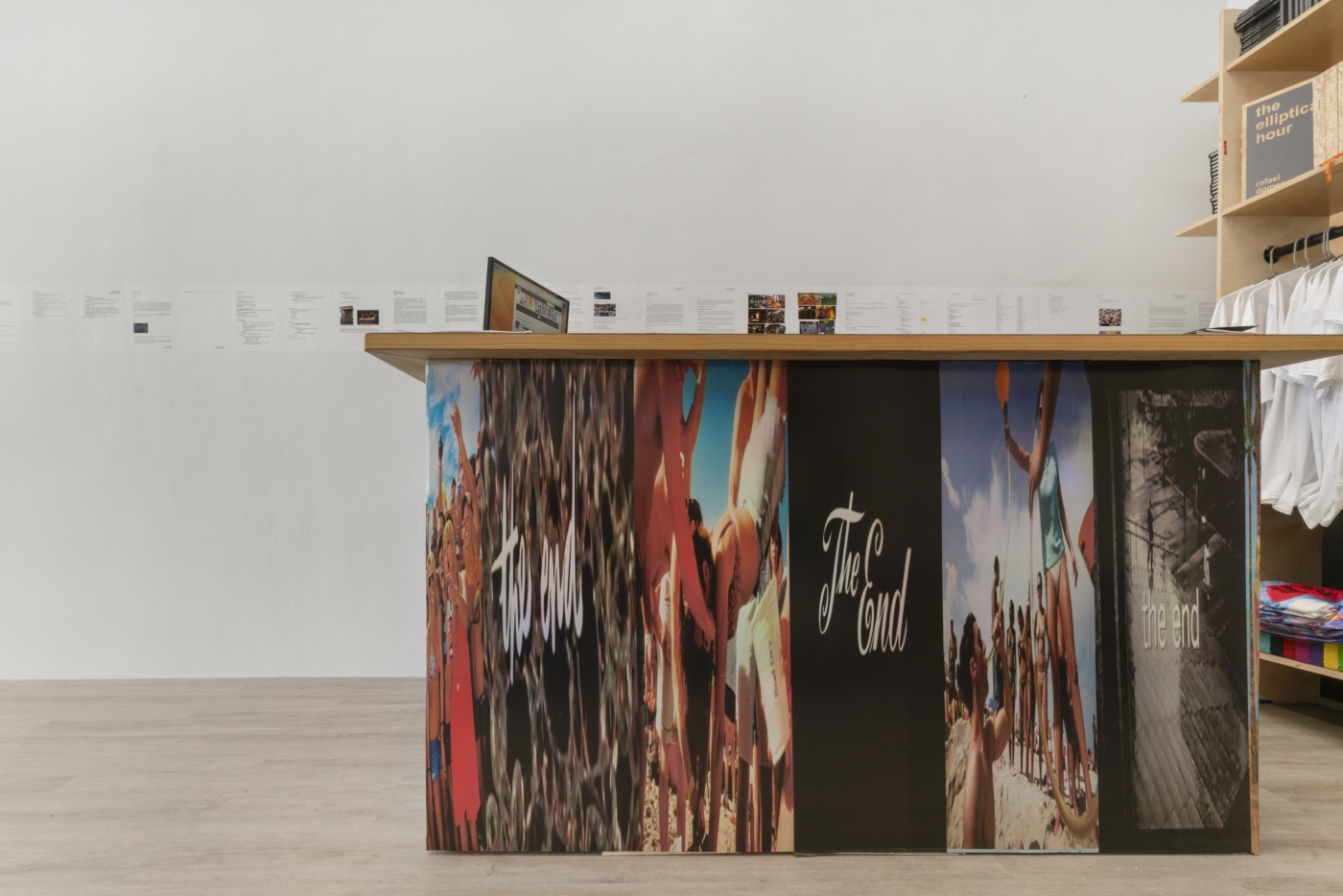
We boarded the catamaran as the sun was setting. The Miami River was still, a sheet of glittering black glass. The boat was white, and I’m pretty sure it was named Mariah, but no one can remember and no one from the charter company returned my phone calls. It was definitely February 2, 2013. There were about forty of us. Soon Mariah would carry us into the coming night.
The boat ride, organized by a nomadic, artist-run collective called the end / SPRING BREAK, was programmed on the occasion of a survey of local artists called New Work Miami 2013, an exhibition hosted by the Miami Art Museum, now the Pérez Art Museum Miami. Patti Hernandez and Domingo Castillo, the primary organizers of the end / SPRING BREAK, wanted to actualize an idea originally had by artist and curator Carlos Rigau. They would screen Werner Herzog’s film Aguirre, the Wrath of God (1972) on a boat as it floated down the Miami River into Biscayne Bay.
Aguirre, the Wrath of God (1972) tells the story of a sixteenth-century Spanish expedition traveling down the Amazon River searching for El Dorado, a mythic city made of gold, as disaster after disaster unfolds. In the fictional story, loosely based on conquistador Lope de Aguirre, Indigenous people in the dense jungles launch arrows aimed at the conquistadors’ hearts; the colonists starve to death and get trapped on the murky brown currents of the mighty Amazon. On the Miami River’s north bank, the Spanish set up a fort and mission in 1567.1

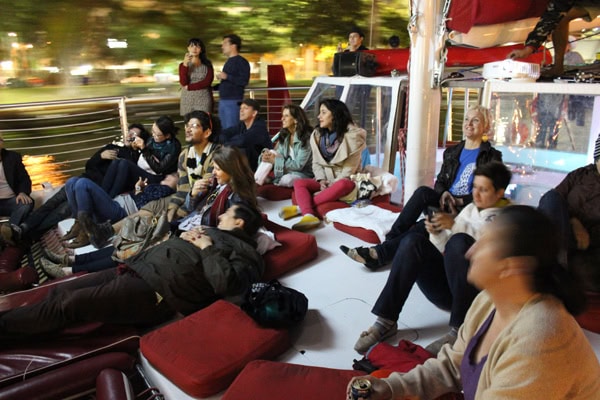
Today, there is a retrospective of the projects that the end / SPRING BREAK put on, held at the Miami-based publisher and space called [NAME], which focuses on marginalized art histories and practices. From 2010 to 2015, the end / SPRING BREAK put on over 300 events, including lectures, art shows, raves, dance performances, noise shows in parking lots, parties, and things that I have tried and failed to classify. The exhibition at [NAME] is an open archive, including printed Google docs and emails and a monitor with thirteen hours of footage from the events. Watching Aguirre, the Wrath of God (1972) on a boat is remembered by Castillo and Hernandez, as well as others, as the highlight of the group’s work.
In 2010, Castillo had just moved back to Miami from New York; he’d saved up some money, but didn’t want money to be the basis of any of his relationships. “I just wanted to help people do things they wanted to do,” he says. “And in exchange, they fed me or I got to stay at their place for a night.” Castillo also wanted a space to do things, but realized that the overhead costs would be limiting. Collaborating with Patti Hernandez, the pair decided to just ask people for spaces and resources ad hoc. Hernandez, who was working as a social worker at the time, says, “It was about this idea of community and care that artist-run spaces can provide, which was happening at places like General Practice.2 Coming out of the 2008 crisis, there were absolutely zero resources for us. We had no fucking clue. I learned about art history and criticism through conversation. And that’s how the end / SPRING BREAK evolved.”
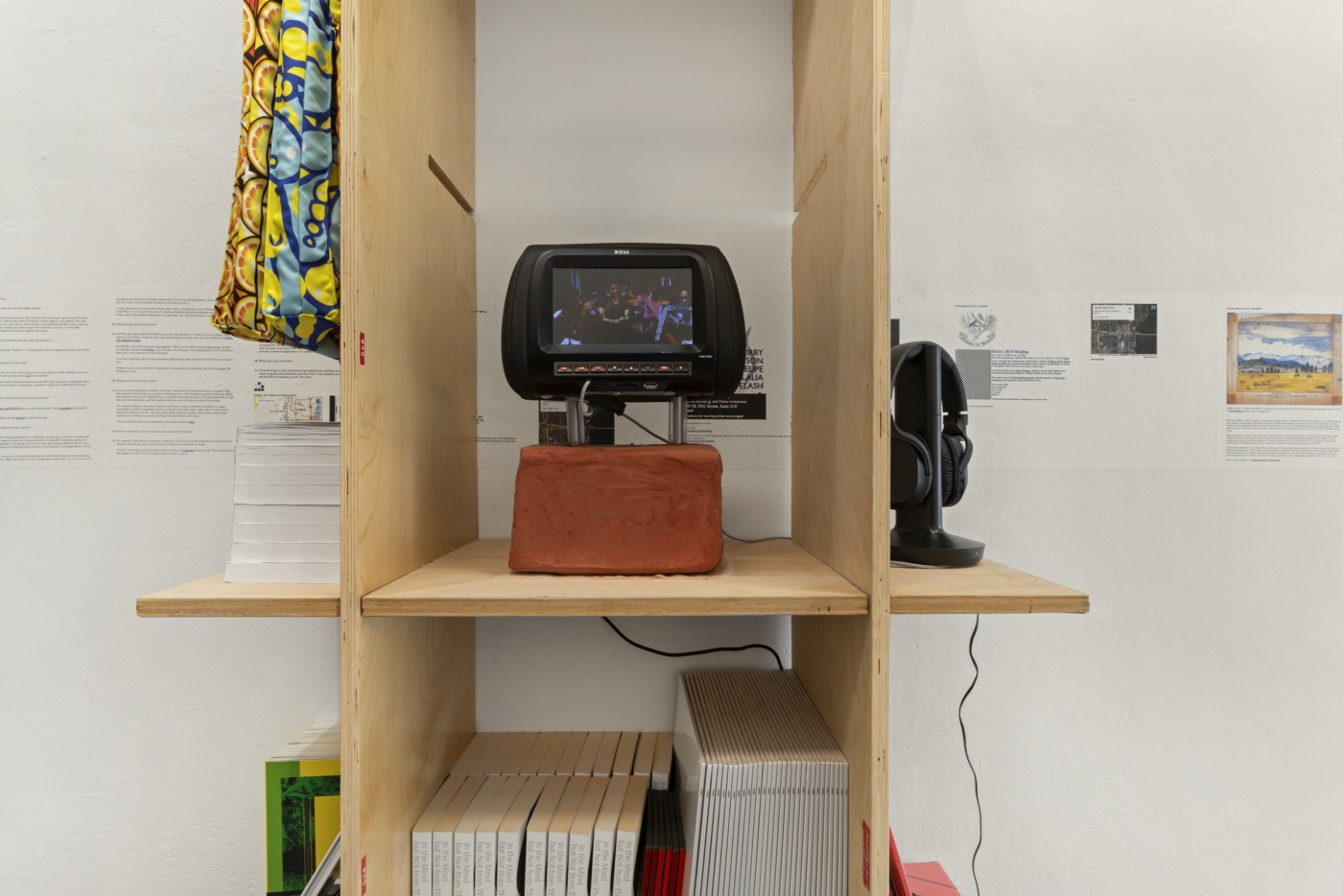
As we departed from the 5th Street Marina, the boat left soft ripples in the black water. That part of the Miami River snakes through Downtown Miami. The sky turned a pink fire and the lights of the tall buildings twinkled on. The Miami River might seem manmade, but it is one of Florida’s oldest natural formations3, evolving over thousands of years, carrying freshwater from the Everglades to the bay before the land was carved up, dredged, and canaled. Spirits were high on Mariah. The boat moved slowly, almost imperceptibly. People chatted—mostly about the fact that we couldn’t believe we were on a boat.
The projector screen was attached to the forestay line of the catamaran’s sail. Someone hit play but something went wrong. There are two original versions of Herzog’s film: one dubbed in German, and one in English. The German version was the one being shown, but no one could get the subtitles to work. Artist Christy Gast, who knows German, was on the boat with a group of friends. “You can say there was a dyke contingent,” she told me, “I want that to be in the record.” Gast started to translate the film for everyone as we sat reclining on cushions arranged on the deck, oohing and aahing as we passed under bridges that lifted for us, the flow of car traffic stopped and staring at us jealously.
I was hoping for detailed recollections, juicy chisme, the silly things people did.
As we approached the mouth of Biscayne Bay, the Miami Circle came into view, a native Tequesta site estimated to be older than the Pyramids in Egypt4. Discovered in 1998, it consists of a thirty-eight-foot circle with 600 post molds cut into the limestone bedrock, thought to be a site for ceremony. Though part of it is protected, and artifacts found on the site will be preserved, Related Group, run by Jorge Pérez (of the Pérez Art Museum Miami), plans to move forward with a luxury development there despite the protests of Indigenous groups5. When we passed the Miami Circle that day, it was right before the Miami Art Museum got converted into the Peréz Art Museum Miami. That day in 2013 was a historical moment, I think, which will be understood as the time right before developers took total control over the city.

Aguirre, played by a maniacal Klaus Kinski, appeared on the screen. Gast yelled the translation of Herzog’s words to us, “I am the great traitor. There must be no other. Anyone who even thinks about deserting this mission will be cut up into ninety-eight pieces. Those pieces will be stamped on until what is left can be used only to paint walls. Whoever takes one grain of corn or one drop of water more than his ration will be locked up for 155 years.” We laughed and laughed as night fell, Miami glowing in its purply way.
As the boat pulled into the bay, the bright light of the city receded. It got darker and darker, and as it did, our voices petered out until it was completely quiet, save for the German lines of the film. Tom Wheeler Castillo, an artist and docent at MAM at the time, recalls: “There was a moment when the trauma in the film was too much. Did someone jump in for a swim? I could’ve been convinced to do so.”
I was hoping for detailed recollections, juicy chisme, the silly things people did. But no one really remembered any of that. I asked writer and photographer Monica Uszerowicz about her memories of the boat ride. “Rob, I need to preface this by saying that I’m starting to wonder if I was even on the damn boat,” she said. “I remember being on the dock, waiting to board. I remember seeing the screen and Klaus Kinski’s black-ringed eyes against the backdrop of bridges and lights. Am I imagining that last part? Did it even happen?”
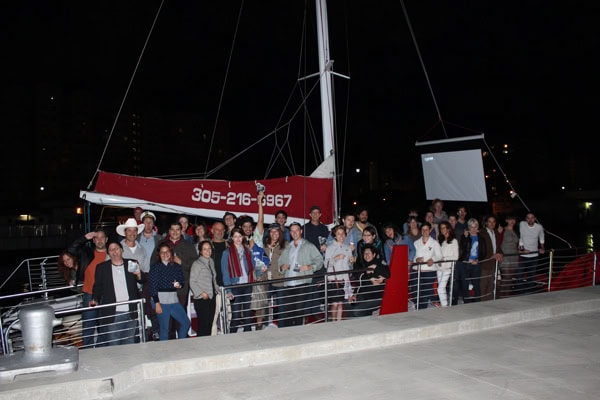
Emily Mello, former deputy director for education and public programs at MAM, says, “the end / SPRING BREAK took this party boat stereotype of Miami and did this thing where we watched an epic movie about colonialism and imperialism. We really got a 360-degree view on development at the end of the world.”
Over ten years after that boat ride, Hernandez is a curator in New York. “The way I organize exhibitions and work with artists is directly related to how I worked at that moment,” she says. “And I feel like, over the years, I’ve searched for this community that we created, and I’ve never found it. Like it will never occur again. It was so sincere and genuine.” Castillo, meanwhile, has retired from art, and is currently studying music in Berlin. “At one point,” he says, “there was so much possibility. And now it’s all a memory.”
All of us continue to search for that place—or time—which may end up being more myth than reality. But for one night, at least, we were all looking for it together.
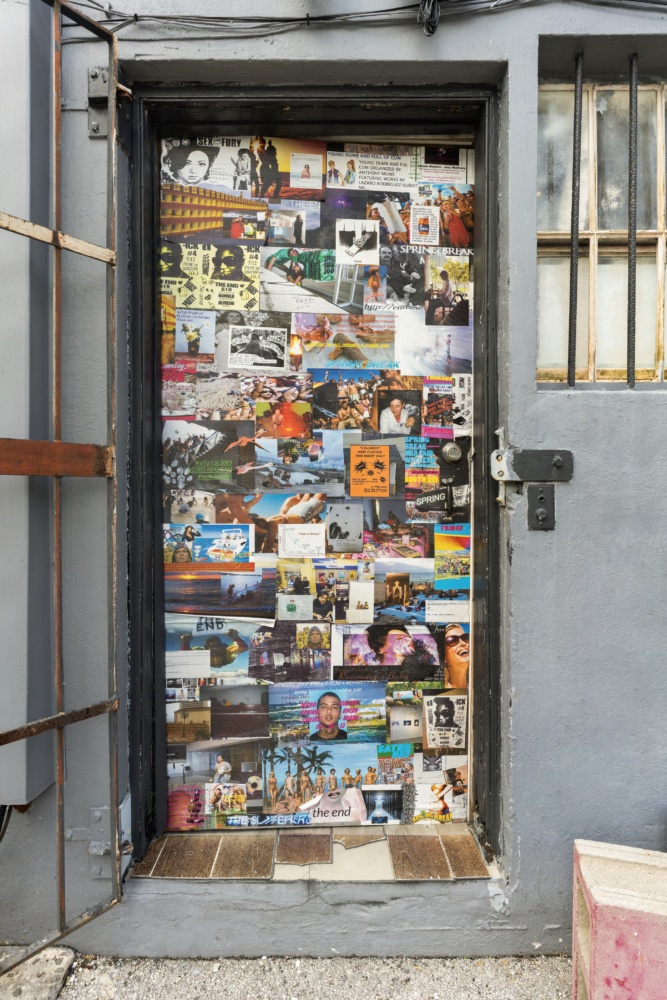
[1] Paul S. George, “Spanish Missions on Miami River, Miami History Blog,” Miami History Blog, February 10, 2019, https://miami-history.com/spanish-missions-on-miami-river-part-1-of-2/.
[2] For more on General Practice and Miami’s artist-run spaces, see: Rob Goyanes, “General Practice,” The Miami Rail, March 1, 2013, https://miamirail.org/essays/general-practice/.
[3] Andrew K. Frank, “Florida’s Historical Amnesia and the Real History of Miami,” The Florida Bookshelf, September 20, 2017, https://floridapress.blog/2017/09/20/floridas-historical-amnesia-and-the-real-history-of-miami/.
[4] Christina Vazquez, “Preservationists worry about what developer will do to Brickell archeological site near Miami Circle,” Local 10 WPLG News, July 13, 2023, https://www.local10.com/news/local/2023/07/13/archeologists-activists-want-sacred-area-near-miami-circle-to-become-green-space/ .
[5] The Miami Herald has published extensively on the Miami Circle and the controversy regarding Related’s development of the site. For further reporting on the significance of the site, see: Andres Viglucci, “The ancient discovery made on the Miami River is so significant it could derail development,” The Miami Herald, April 3, 2023, https://www.miamiherald.com/news/business/real-estate-news/article273776890.html, and for Jorge Pérez’s perspective on it, see: Jorge M. Pérez, “Related Group CEO Perez: Misinformation muddies water of Brickell archaeological finds | Opinion,” The Miami Herald, March 16, 2023, https://www.miamiherald.com/opinion/op-ed/article273216815.html.
[6] “Aguirre, the Wrath of God (1972),” IMDB, accessed June 19, 2024, https://www.imdb.com/title/tt0068182/characters/nm0001428 .
the end / SPRING BREAK is on view at [NAME], Miami through July 6, 2024.




